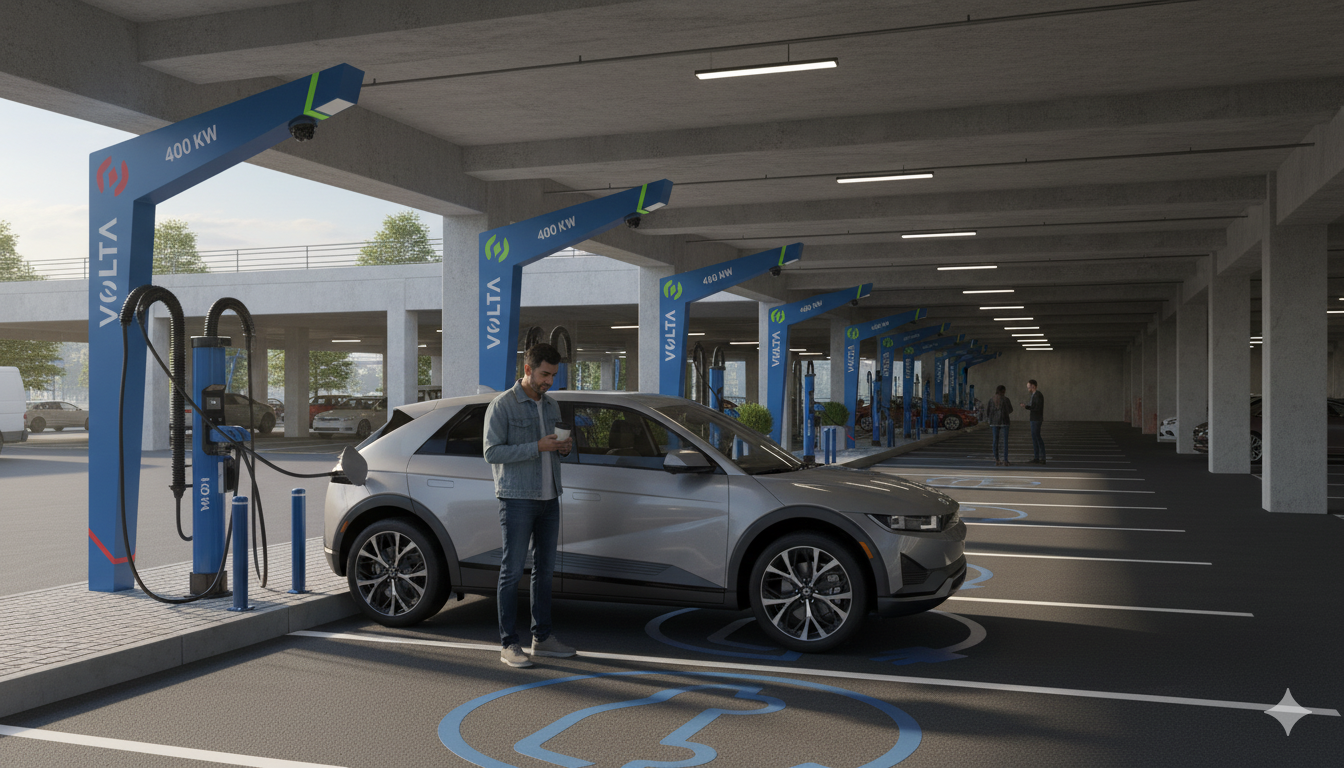What to Know Before Buying Your First EV in CEE (Popular Models and Myths Debunked)

Buying your first electric vehicle (EV) is an exciting step – but it can also feel daunting, especially in Central and Eastern Europe (CEE) where the EV ecosystem is still developing. This comprehensive guide will walk you through everything you need to know before going electric in the region.
EV Adoption in CEE: Context and Popular Models
While Western Europe has seen a surge in EV adoption, CEE has been catching up more slowly. For instance, as of 2024 fully electric cars made up only about 3% of new car sales in Poland – one of the lowest shares in the EU. In Czechia, about 36,000 battery-electric cars are on the road, roughly 0.5% of all passenger vehicles.
These numbers are growing quickly, but EVs are still a small minority of cars in CEE. That also means early adopters (like you) will benefit from increasing government support and rapidly expanding infrastructure.
Popular EV Models in Czechia, Slovakia, and Poland
Some of the same models popular in Western Europe are hits in CEE as well. According to 2024 registration data:
- Tesla Model Y was the top-selling EV in Poland, followed closely by the Tesla Model 3
- In Czechia, the domestic brand Škoda is strong, especially the Škoda Enyaq iV, which rivals Tesla in market share
- Volkswagen's ID. series (like the ID.4 and ID.3) are also widely seen
- The MG4, a budget-friendly hatchback, made it into Poland's top 10 EVs
- There is also growing interest in the Dacia Spring, one of Europe's cheapest EVs
If you're looking for your first EV, you might consider:
- City cars (e.g. Renault Zoe, VW e-Up, Fiat 500e) for urban use
- Compact/midsize hatchbacks or SUVs (e.g. Škoda Enyaq, Kia Niro, VW ID.4) for a range-price balance
- Higher-end long-range models (e.g. Tesla, Audi Q4 e-tron, BMW i4) for frequent long trips
| Model | Battery (usable) | WLTP Range |
|---|---|---|
| Škoda Enyaq iV 60 | ~59 kWh usable (63 kWh gross) | up to 268 mi (≈431 km) |
| Škoda Enyaq iV 85 | ~77 kWh usable | up to 359 mi (≈578 km) |
| Tesla Model Y Long Range RWD | ~78 kWh | 387 mi (≈623 km) WLTP |
| MG4 EV SE (Standard Range) | ~50.8 kWh usable | 218 mi (≈351 km) WLTP |
| MG4 EV Long Range | ~61.7 kWh usable | ≈281 mi (≈452 km) WLTP |
| MG4 EV Extended Range | ~74.4 kWh usable | ≈323 mi (≈520 km) WLTP |
Charging, Range and Infrastructure: Separating Myth from Reality
Everyday Driving Range Needs
Myth: "Electric cars have no range and will leave you stranded."
Reality:
Most EVs now offer 200–450 km of range. Daily driving needs in CEE are typically under 100 km, so even small-battery EVs are practical with overnight charging at home. Cold weather can reduce range by ~20–30%, but with planning, this is manageable.
Charging Access: Home, Work, and Public
Myth: "You'll have nowhere to charge, especially in an apartment."
Reality: Charging options are expanding fast:
- Home charging: With a driveway or garage, a 7 kW wallbox provides overnight charging. Subsidies exist (e.g., CZK 30,000 in Czechia) to help with installation.
- Workplace charging: More employers are offering it, often with government support.
- Public charging: AC and DC chargers are popping up in shopping malls, city centers, and highways. Fast chargers (50–350 kW) allow quick top-ups.
Debunking Common EV Myths
"EVs will all catch fire."
Data shows EVs are less likely to catch fire than petrol cars. Most EV fires occur due to extreme collisions or defects, and EVs include multiple fire safety systems.
"Batteries need replacement every few years."
Today's batteries are long-lasting. Most come with 8-year warranties and retain 80–90% capacity after many years. Frequent fast charging does not drastically affect lifespan.
"There are no incentives here like in Western Europe."
Incentives in CEE are growing. From tax exemptions to purchase grants, support varies by country but is increasingly meaningful.
Incentives and Support for New EV Buyers in CEE
Poland:
- Up to PLN 40,000 subsidies through the "Mój Elektryk" program
- Excise tax exemption
- Free parking in some city zones
- Bus lane access for EVs
- PLN 700 million fund for expanding public charging infrastructure
Czech Republic:
- No current direct rebate for private buyers
- EVs exempt from road tax and motorway toll vignettes
- Free parking in blue zones (being phased out in 2024)
- CZK 30k home charger installation subsidy
- Company EVs benefit from lower taxation
- Building code requires new buildings with 10+ spots to include EV chargers
Slovakia:
- €8,000 grants were previously offered; new subsidies expected
- Minimal registration fees and no road tax
- Free or discounted parking in cities
- EU recovery funds are financing a major charger rollout (target: 6,000 public chargers by 2026)
- Accelerated depreciation for company EVs
Final Thoughts: Your First EV Journey in CEE
Choosing your first EV in Central-Eastern Europe is no longer a leap of faith. With proven models, growing infrastructure, and expanding incentives, going electric is increasingly practical.
Key tips:
- Pick a car that suits your driving needs
- Use available grants and tax breaks to reduce costs
- Join EV communities for support and advice
Myths about battery life, fires, and infrastructure are being debunked daily by real-world experience. Early adopters in CEE are discovering that EVs are reliable, economical, and enjoyable. Beyond personal benefits, driving an EV contributes to cleaner air and a more sustainable future. And the community of EV owners across Czechia, Slovakia, and Poland is ready to welcome you.
